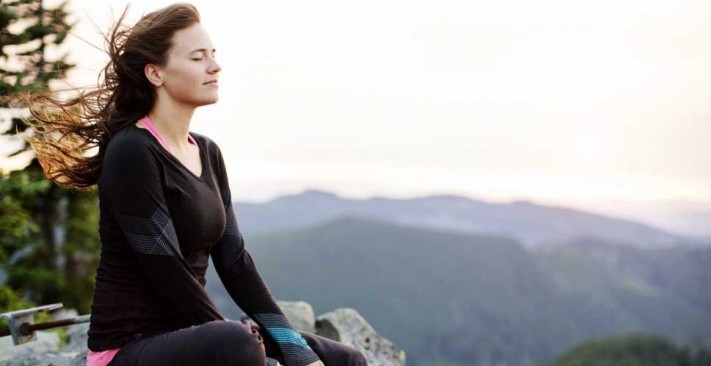 Sharon Isbin is considered by many music critics to be the leading classical guitarist of our time. Among her many honors, she was named “Best Classical Guitarist” by Guitar Player magazine and is the first guitarist in over 40 years to receive two classical Grammy Awards (2001 and 2010), and the only solo guitarist to win a Grammy in the last 30 years.
Sharon Isbin is considered by many music critics to be the leading classical guitarist of our time. Among her many honors, she was named “Best Classical Guitarist” by Guitar Player magazine and is the first guitarist in over 40 years to receive two classical Grammy Awards (2001 and 2010), and the only solo guitarist to win a Grammy in the last 30 years.
A former student of Andrés Segovia and a graduate of Yale University, Ms. Isbin has performed to sold-out audiences around the world—from Carnegie Hall to London’s Barbican to the White House. As head of the guitar department at the Aspen Music Festival and The Juilliard School, she has developed an original technique for teaching classical guitar. Yet she doesn’t limit herself to classical music—she has mastered a musical palette that ranges from bossa nova to jazz to folk, collaborating with other guitarists in new ways. In the following interview, she explains how she has been able to combine her virtuosity, her technique, and her passion in order to create music that reaches into the heart and touches the soul. She also discusses the influence on her life and music of the TM technique, which she has been practicing daily since she was 17 years old.
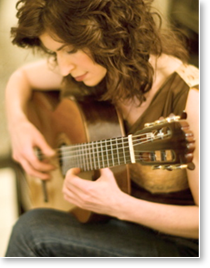
What do you feel has made your music stand out from the crowd?
I explore a variety of genres, from my home base in classical to unusual collaborations in jazz, bossa nova, folk, country, rock, and even film music, performing on Scorsese’s The Departed. But most important to me and to listeners is the emotion, lyricism, sensuality, and passion.
What is your process of interpreting the music that you play? How do you go about it?
I choose music that I love and which speaks to me, and that makes it easy to be expressive. The more I play a new work, the more I discover in it. My goal is to enter the mind of the composer while feeling and expressing the emotion from within. In a way, I explore different characters of a piece much like actors do with a script. And when I choose dynamics and shadings to delineate the different layers and levels of voicing, architecture, and structure within a work, it’s much like a director staging and guiding actors in the foreground, middle, background, etc.
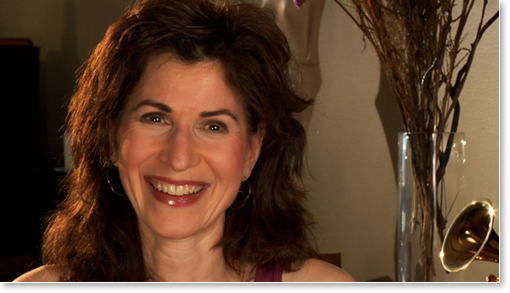
Are there any principles of creativity that you employ when you create an album, such as “Sharon Isbin and Friends,” or prepare for a concert performance?
Developing an album is a varied process. For example, my solo disc, “Dreams of a World” (2001 Grammy Award) came together from a pile of scores I’d assembled over time, which I’d found to be particularly beautiful and which happened to be all folk-inspired. “Journey to the Amazon” has music from countries bordering the Amazon, and evolved from making several trips to the rainforest and then performing with a composer/organic percussionist from a tribe in the Amazon, Thiago de Mello, and saxophonist Paul Winter. “J.S. Bach Complete Lute Suites” was a natural after ten years of study with the great keyboard artist/Bach scholar Rosalyn Tureck. When I was invited to make the New York Philharmonic’s first and only guitar recording, I chose Latin music from Spain, Brazil, and Mexico. Other collections include Baroque concerti, American concerti, Latin Romances, etc.
My recent “Journey to the New World” (2010 Grammy Award) is an exploration of folk music beginning in the 16th century British Isles, Ireland, and Scotland and crossing the ocean with the immigrants to the New World. Its centerpiece, “Joan Baez Suite,” was written for me by John Duarte and inspired by music Baez made famous in the early part of her career. When Joan heard it, she offered to sing on the album and performs beautiful renditions of “Wayfaring Stranger” and “Go ’Way from my Window.” Virtuoso country fiddler Mark O’Connor concludes the journey, joining me in the folk suite he wrote for us.
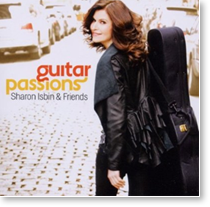
My latest, “Sharon Isbin & Friends: Guitar Passions” (Sony), pays tribute to my guitar heroes and includes guest rock stars Steve Vai, Steve Morse, and Nancy Wilson (from Heart); jazz virtuoso Stanley Jordan; bossa-nova singer/guitarist Rosa Passos; and more. The Latin-flavored disc also honors past heroes like Andrés Segovia, with whom I studied; Joaquin Rodrigo, who wrote the famous “Adagio”; and Tom Jobim, with whom I had collaborated.
Do you feel different when you perform a piece by Joan Baez versus a classical piece? Is the creative process any different?
Though I explore a different kind of rhythmic and stylistic freedom when playing with Joan Baez or Steve Vai than I do playing Bach (though Bach’s music, with all its improvised ornaments and embellishments, was the jazz of its time!), my goal is always to make the music sound fresh, imaginative, and heartfelt.
You have been called “the Monet of classical guitar—a master colorist.” Why do you think people have such an emotional reaction to your music?
I love to be expressive on the guitar with lyricism, dynamic contrasts, nuances, phrasing, articulation, and a panoply of colors and timbres. I cultivate these techniques to serve the music and to communicate it with feeling and emotion. For example, I can make the guitar sound like a human voice by connecting notes of a melody with nuances of sound while shaping the contour of the line as a vocalist would do. This also creates a three-dimensional quality and depth.
I understand that you have written a teaching guitar book. Are there new techniques that you have developed and are passing on to your students? What was the process for developing those?
Among the topics I explore with my students at Juilliard and in my “Classical Guitar Answer Book” are techniques I’ve developed of preparation, memorization, and visualization to encourage peak performance. These are the secrets and methods I’ve discovered and refined over years of performing which I am able to share with others. I find it particularly effective to practice these techniques at the end of a session of meditation when the mind is especially stress free and receptive to suggestions and learning. The end of a meditation is an ideal time, in fact, to plant any suggestion about a goal or task you wish to achieve.
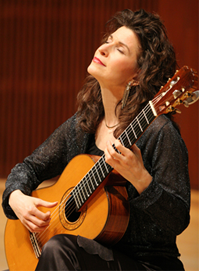
I read that you have been practicing the Transcendental Meditation technique since you were 17. Do you feel that transcending on a regular basis has had an influence on your artistry and work, and if so, how?
Practicing TM has inspired heights of creativity for me on many levels: as a musician, arranger, educator, writer, and artistic director. Because TM is so effective at eliminating stress and distraction, it encourages laser-sharp focus and concentration for any task.
As a musician, TM enhances my mental stamina, memory, concentration, and ability to learn. It puts me in touch with my innermost creative core and enables its expression through music. Most importantly, it facilitates instant access to a state of “cosmic immersion,” that feeling of being in the flow, or in “the zone.” When I perform onstage, I enter a state of being very similar to the one I enter daily when practicing TM. It’s a sense of communion with the energy of the universe, the audience, the composer, and the music—without ego or interference. It’s a feeling of unity between me and the listeners, a sense of “oneness” in which we are all experiencing the beauty of the music together. That sensation is one of the reasons live performances can be so powerful—everyone is focused and transported, and the experience is unique and in the moment, never to be replicated.
___________________________________________________
Interview reprinted from Enlightenment: The TM Magazine, Issue 7
For a free subscription to this online magazine, CLICK HERE.
© Copyright 2012 Maharishi Foundation USA, a non-profit educational organization
___________________________________________________
You can watch and listen to Ms. Isbin performing at the White House by clicking on the video link below.
___________________________________________________
CLICK HERE to watch a YouTube video for music and interviews with Sharon and Steve Vai and to see her in studio with Nancy Wilson (Heart) and Stanley Jordan and others during the production of her latest CD, Sharon Isbin & Friends: Guitar Passions



